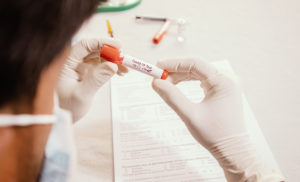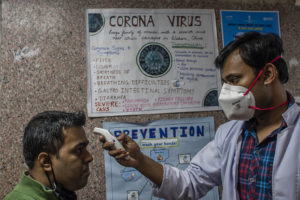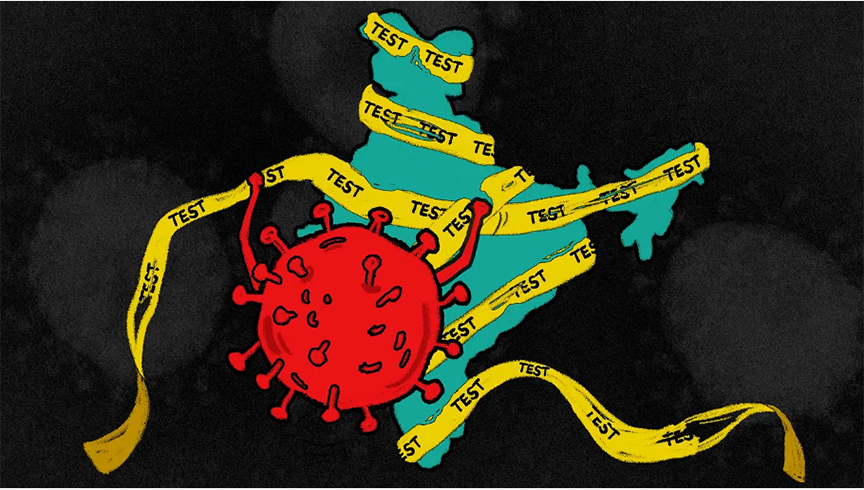Constrained by inadequate testing strategies, kits and facilities, the authorities may be seeking infection only where it is ‘likely’, muddying the pandemic picture
On March 16, the World Health Organisation said it was imperative for all countries to take a “comprehensive approach” to contain the rapid spread of the novel Coronavirus. One of the most effective ways to contain the spread of the virus, the WHO chief said at a press briefing that day, was to ramp up testing.
“You cannot fight a fire blindfolded,” Dr Tedros Adhanom Ghebreyesus explained. “We have a simple message for all countries: test, test, test.”
Several countries, especially South Korea, Taiwan and Germany, had been doing just that and reaping the benefit by curbing the spread of the infection. Not India, which had recorded its first case on January 30 in Kerala. In fact, even after it had become clear that the country was in for a full-blown outbreak, testing remained limited.
The day after the WHO’s advisory, India started screening passengers for Coronavirus at Mumbai, Delhi and Kolkata airports, extending it to four more airports on January 21. However, it was only screening passengers from China. At the time, the WHO had reported 278 cases of Coronavirus from China, and one each from Japan, South Korea and Thailand.
On February 5, the Indian authorities began screening travellers from Singapore and Thailand as well. It wasn’t until March 4 that “universal screening at all international airports and seaports” was announced. Testing, however, was being scarcely carried out.
By March 24, when Prime Minister Narendra Modi declared a nationwide lockdown to tackle the pandemic, India was testing an average of 1,338 samples a day, according to a press note from the health and family welfare ministry.
Testing wasn’t ramped up even after the lockdown was imposed. By April 30, at least 8,30,201 tests had been done throughout the country; 33,610 people had tested positive for the virus and 1,075 had died. Since a person may need to be tested more than once to confirm or rule out Covid-19, the total number of people tested is likely lower than the number of tests done so far.
As for the rate of testing, India has done 686 tests per million of population so far. South Korea, in comparison, has carried out 24,435 tests per million, the US 16,975, Britain 11,497, Taiwan 2,639.
There are several reasons why India’s testing has been abysmal, but the lack of adequate testing kits and protective equipment for healthcare workers appears mainly to blame.
Indian officials have consistently refused to divulge details on the availability of testing kits. At a press briefing on March 17, Lav Agarwal, joint secretary in the health and family welfare ministry who has been tasked with communicating the Modi government’s response to the pandemic, was asked about the country’s low testing figures.
“We do not want to come to a situation where we are just testing a person because he needs to be tested,” he responded, avoiding a direct answer. “See, it’s very important to understand that unless we follow these protocols, we will end up creating unnecessary panic. That is why people who need to be tested, they have to be tested.”
Since then, even at press briefings, Agarwal and other officials have either stonewalled questions about testing kits or simply not entertained them.

It’s a similar story with state health officials. By April 30, for example, Punjab had tested 18,670 people and found 379 positive cases. Taking Punjab’s population from the 2011 census, that’s a testing rate of 673 people per million. By April 1, the state had tested 4,844 people and confirmed 182 infections, a testing rate of 174 per million.
However, the same day, Anurag Agarwal, the state’s principal secretary for health and family welfare, had told Newslaundry they had enough kits. “We do not do random and indiscriminate testing. We follow the ICMR guidelines for testing and have less positive cases. We have enough testing kits for the state.”
How many kits exactly? Agarwal wouldn’t answer.
Nor would Rohit Kumar Singh, the additional chief secretary for medical health and family welfare in Rajasthan, who has earned praise for helping contain the Bilwara outbreak, including through mass testing. Rajasthan had collected 1,03,704 samples for Coronavirus testing until April 30. A month ago, on April 2, it had done 6,530 tests and confirmed 108 infections.
“We have done a better number of tests than several other states,” Singh said at the time. “As of now we have enough testing kits and testing is being conducted as per the ICMR guidelines.”
He wouldn’t provide a number either.
Yet, it’s quite evident that the lack of adequate testing kits and facilities informed the country’s initial testing strategy, devised by the Indian Council of Medical Research, which was to test only those who had recently travelled abroad and their contacts. As such, only about 5,900 people had been tested by March 13 and 78 of them had been found infected. That same day, the ICMR expanded the network of government labs authorised to test for Coronavirus from 51 to 65.
The network has since grown to over 150 labs, including private ones, but not without controversy. The government has been accused of arbitrarily allowing private labs to charge Rs 4,500 per RT-PCR test — the standard test for Coronavirus — making it unaffordable for the vast majority of the country’s population.
Relatedly, on April 16, the ICMR bought, through private firms, antibody testing kits from China. They turned out to be faulty, however, and several states refused to use them. The central government eventually discontinued their use and claimed it had not paid for the kits yet, even as the Chinese suppliers insisted that the products were approved by the ICMR and Pune’s National Institute of Virology.
On March 20, the ICMR testing strategy was modified to cover asymptomatic people in direct contact with Covid-19 patients and hospitalised patients suffering from fever, cough, cold, or shortness of breath. In the two weeks thereafter, the total number of people tested across the country reached 75,000.
On April 9, the ICMR added to the list of people eligible for testing those living in Coronavirus hotspots, clusters, and in large gatherings of migrant workers. It also specified that a RT-PCR test would be conducted within seven days of a person developing symptoms and an antibody test – also known as the rapid test because the result is available in a few hours – would be done a week later. And if the rapid test yielded a negative result, another RT-PCR test would be carried out to confirm it.
Two weeks later, by April 23, at least 4,85,172 people had been tested across the country, according to the ICMR. That is just about 401 tests per million people. Put another way, a month into the nationwide lockdown, India had tested just about 0.04 percent of its population. The figure has marginally increased to around 0.07 percent since.

This extremely worrying picture of India’s testing strategy and methods is reflected in another statistic: as on April 27, at least 28,380 of the 6,65,819 tests conducted had turned out positive. That is a positivity rate of only 4.3 percent. In comparison, the positivity rate is about 9.2 percent in Pakistan, 21.8 percent in the UK, and 54.25 in the US, according to data provided by the health ministries and centre for disease control dashboards of the respective countries.
At first glance, the low positivity rate might give the impression that India has fewer Coronavirus infections as a share of its population. But that would be misleading, experts warned.
“A whole lot of negative people appear to have been tested in India,” said Dr T Jacob John, former head of the ICMR’s Centre for Advanced Research in Virology. “Something may not be right with the strategy of testing. If you don’t get a decent proportion of positive cases, a minimum of 10 percent and ideally over 20 percent of those tested, then you are seeking infection where it is ‘likely’. If you want to use your tests efficiently then you must think of better ways and strategies.”
By way of an example, John pointed to the case of an Indore doctor who tested positive for the virus and died on April 10, despite having no traceable contact with any Covid-19 patient, indicating that community transmission was underway in India. Community transmission, the last stage in the spread of a disease, is when the source of infection can no longer be traced. In spite of mounting evidence, the Indian government continues to deny that community transmission has taken place.
“The testing strategy is designed on the assumption that there is no community transmission,” John complained. “This has not helped us when it comes to keeping safe unsuspecting doctors, nurses and others on the frontlines.”
This strategy is particularly flawed for a country as densely populated as India. This has become evident in Dharavi, the mega slum in Mumbai where close to a million residents are forced to live close together in unsanitary conditions and even share toilets. By all indications, community transmission of coronavirus might have already taken place though officials insist it hasn’t.
Several experts also questioned the “symptomatic approach” for testing. T Sundararaman, former dean of the School of Health Systems Studies at the Tata Institute of Social Sciences, argued that symptomatic people not in contact with a Covid-19 patient and foreign passengers should have been tested from the start.
“Since we didn’t test symptomatic people with no contact, we have a low testing rate as well as a low positivity rate,” he said. “Iceland has a population that’s one tenth of Tamil Nadu’s, yet they have done 60,000 per million tests. In India, the number is very low. Some countries have achieved per day tests equal to our total number of tests since the beginning of the epidemic. Partly, the reason is that we have a narrative that we have been very successful in controlling the situation.”
Sundararaman rued that India did not ramp up testing until well into April. “If the tests had been conducted early, the authorities would have been able to localise the chains of transmission and take much more pointed action.”
(This piece is part of a project supported by the Thakur Family Foundation. The Thakur Family Foundation has not exercised any editorial control over the contents of this research.)
www.newslaundry.com





